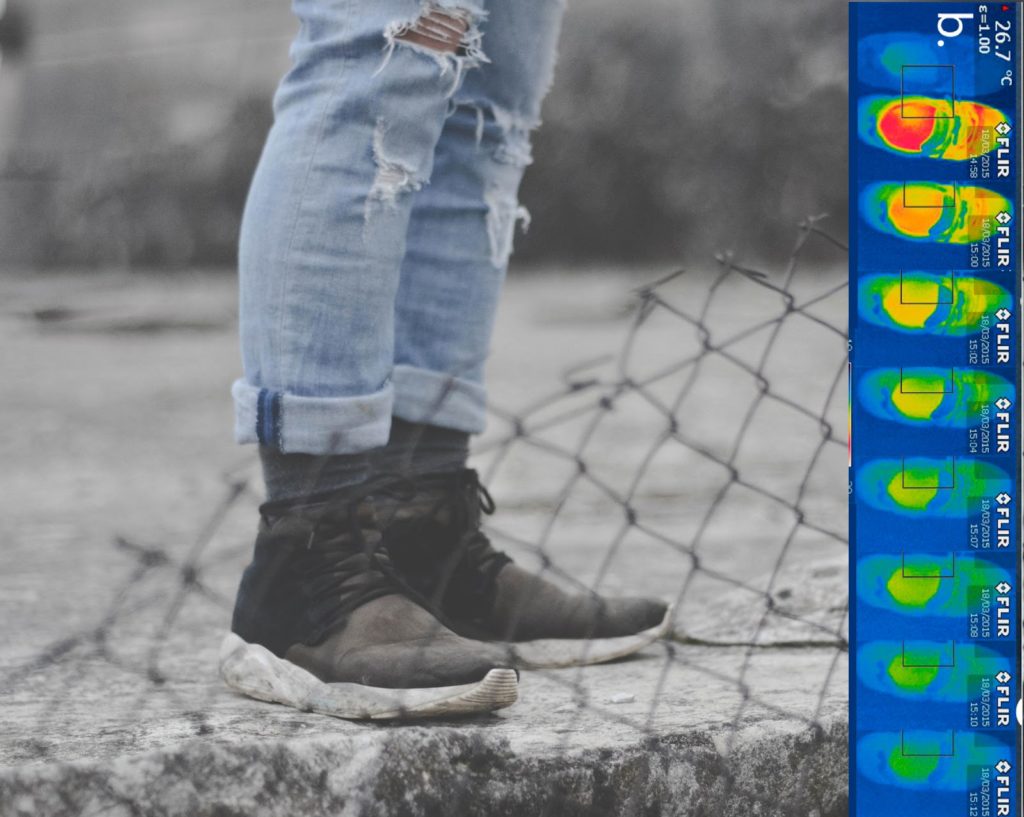We’re all familiar with “heat signatures” and “infrared images” thanks to the numerous cop shows on television. You’d be surprised to know, though, that in the real (not reel) world, images from a thermal camera are not accepted as evidence in a court of law, because they simply aren’t considered scientifically sound evidence. Scientists from the Royal Melbourne Institute of Technology have sought to address this issue by developing a scrutiny-proof method to verify a suspect’s alibi by simply checking the suspect’s shoes. Yes, shoes.
All objects emit infrared radiation, the intensity of which depends on the temperature of the object. Thermal imaging technology can detect this radiation and create an electronic image, based on the fact that it is possible to differentiate between people and objects in a room. But there’s a catch. Humans cannot see infrared radiation, so it would be rather difficult to convince a room full of jurors that a suspect’s alibi wasn’t that solid after all, based on only a thermal image.
Basic thermodynamics tells us that any object hotter than its surroundings will cool until its temperature matches that of the surroundings. Hence, there is invariably a relationship between the temperature of an object and the time it takes to cool. It should therefore be possible to verify whether an object was at the location of interest, solely on the basis of the temperature of the object (and thus how much time it has taken to cool), as recorded by the thermal image.
Shoes were an obvious choice for this study, since most suspects are likely to wear them. Three types of shoes: running shoes, leather dress shoes, and trail running shoes, were chosen for the study. A subject wore the shoe for half an hour, of which ten minutes were spent walking around. A series of thermal images were recorded shortly after removing the shoe to establish how each type of shoe cools over time. The pixel intensity of the thermal image was found to decrease with temperature. Equations were then modeled to predict the time for which a shoe was worn, using the pixel intensity at different points of time.
The thermal camera and equations modeled in this work could precisely verify if a shoe was worn for time periods up to half an hour, which corresponds to a shoe temperature of approximately 72 F, according to the modeled equations. This means that law enforcement can verify the whereabouts of a suspect and also corroborate the time actually spent by the suspect at a location, but only within a time frame of half an hour.
The researchers believe that they can increase this time frame with slight tweaks to their equation to factor in the material of the shoe, and use temperature sensors that can adapt to local environmental conditions. Thermal cameras are readily available and easy to use, and basic science and equations to process data from thermal images can greatly aid law enforcement in presenting strong evidence that can withstand the barrage of scrutiny in a court of law.


